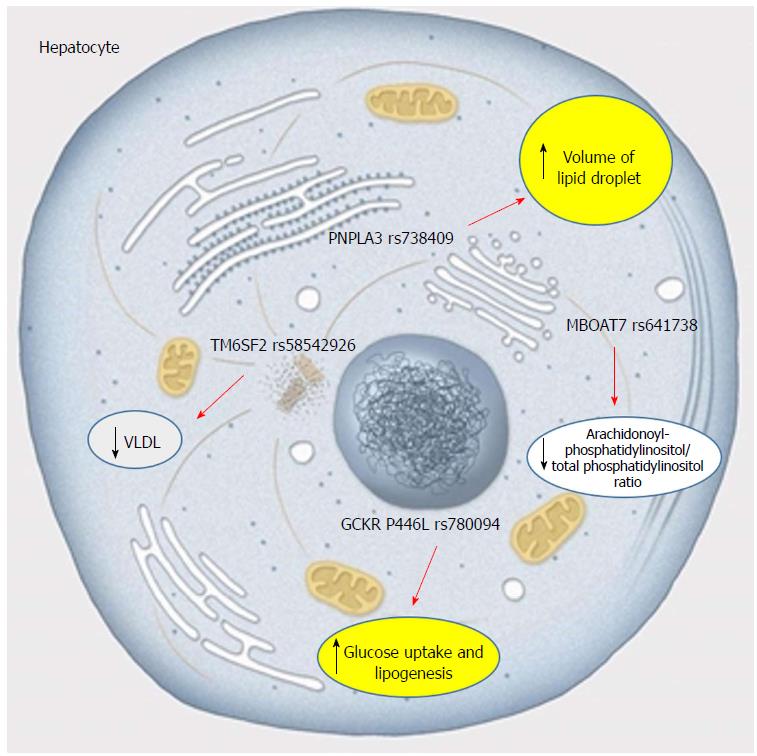Copyright
©The Author(s) 2018.
World J Gastroenterol. Nov 21, 2018; 24(43): 4835-4845
Published online Nov 21, 2018. doi: 10.3748/wjg.v24.i43.4835
Published online Nov 21, 2018. doi: 10.3748/wjg.v24.i43.4835
Figure 1 Genetic polymorphisms more consistently associated with non-alcoholic fatty liver disease and their suggested physiopathological role.
Patatin-like phospholipase domain-containing protein 3 is a lipase involved in the hydrolysis of triacylglycerol and is localized in the endoplasmic reticulum and directly on the surface of lipid droplets. Patients with the I148M variant have a reduced enzymatic activity which impairs the mobilization of fatty acids and favors the development of steatosis. Transmembrane 6 superfamily member 2 is involved in the enrichment of triglycerides to apolipoprotein B100 in the pathway of very low density lipoprotein (VLDL) secretion from hepatocytes. The E167K variant causes a retention of triglycerides in hepatic lipid droplets and a reduced secretion of VLDL. A lower expression of membrane bound O-acyltransferase domain containing 7 associated with the rs641738 allele determines changes in the hepatic phosphatidylinositol acyl-chain remodeling, increased hepatic fat content and histological damage. Finally, glucokinase regulatory gene regulates de novo lipogenesis by controlling the influx of glucose in hepatocytes. The P446L variant increases hepatic fat accumulation by stimulating lipogenesis and glucose uptake. PNPLA3: Patatin-like phospholipase domain-containing protein 3; TM6SF2: Transmembrane 6 superfamily member 2; VLDL: Very low density lipoprotein; MBOAT7: Membrane bound O-acyltransferase domain containing 7; GCKR: Glucokinase regulatory gene.
- Citation: Vespasiani-Gentilucci U, Gallo P, Dell’Unto C, Volpentesta M, Antonelli-Incalzi R, Picardi A. Promoting genetics in non-alcoholic fatty liver disease: Combined risk score through polymorphisms and clinical variables. World J Gastroenterol 2018; 24(43): 4835-4845
- URL: https://www.wjgnet.com/1007-9327/full/v24/i43/4835.htm
- DOI: https://dx.doi.org/10.3748/wjg.v24.i43.4835









